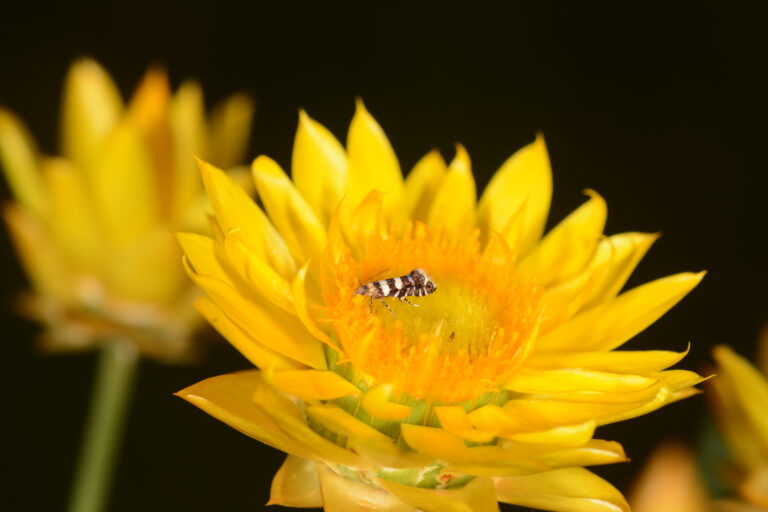
The Upper Campaspe Landcare Network would like to invite you to join us for the ‘Virtual” launch of our Pollinator Corridor Project via ZOOM at 11am on Sunday 15th November 2020.
We are excited to announce that the highlight of our launch will bee (ha, ha) Guest Speaker, Gisborne raised – Doctor Mark Hall – from Hawkesbury Institute for the Environment. During his presentation and open discussion time, Mark will speak about:
- the pollinators in the Upper Campaspe Catchment
- the importance of pollinators
- bee ID and telling them apart from wasps and flies
- cool facts / features of native bees
- threats to bees / pollinators
- how to create beescapes (pollinator corridors)
Pollinator corridors are akin to biodiversity corridors designed for larger species, but have adaptations better suited to smaller native species—bees, insects, butterflies, moths, birds, and bats among others—that keep local ecosystems running.
Pollinator corridors do not always restore or protect habitat; instead, they can be designed and built in the middle of landscapes dominated by humans, such as agricultural land and urban streets.
The UCLN has designed the Pollinator Corridor Project to engage and unite the community within the Upper Campaspe Catchment, with its varied landscape and mixed land usage, around a common goal – the preservation, enhancement and creation of connected biologically and ecologically diverse habitats and food sources for pollinators.
The Project will allow groups and individuals of all ages to join together to establish pollinator corridors within the Catchment, with the aim of increasing environmental resilience through improved biodiversity, the creation of microclimates, and improved soil and water health; whilst improving the functionality and productivity of natural ecosystems and agricultural landscapes.
Pollinator corridors require a mix of vegetation types to link pollinator habitat. They are connecting patches of vegetation of various scale designed to help indigenous pollinators move through the landscape. Upper canopy species provide overshadowing and shade for soil, with deep roots lowering ground water levels and reducing salinization. Mid-story flowering shrubs and grasses are key to good Pollinator Corridors, and native grasses such as Wallaby Grass provide excellent habitat for pollinator and beneficial insects.
Biodiverse landscapes have a higher overall species richness of native pollinators. In turn, pollinators within corridors contribute to improved biodiversity and ensure ongoing environmental resilience.
Within the Upper Campaspe Catchment, our smaller indigenous pollinators that keep our ecosystems running, can only travel small distances at a time. Isolated patches of pollinator habitat are not as useful to our native pollinators as are continuous corridors between larger habitats. Pollinator corridors help smaller pollinators disperse more efficiently and contribute to a more diverse and healthy community of species.
Even in our beautiful Catchment, pollinators are declining in both diversity and number, facing threats including habitat fragmentation, harmful chemicals, invasive species, and climate change.
It is important to remember that a decline in pollinator species means a decline in natural ecosystems and food production. Pollinator corridors have the potential to contribute to improved food production and an increase in biodiversity in the Catchment through an increase in the prevalence and diversity of native pollinators.
Tickets are available now through EVENTBRITE! Please reserve your space as we are limited to 100 live participants… but don’t worry if you miss out – the recording of the launch will be available on our website!
